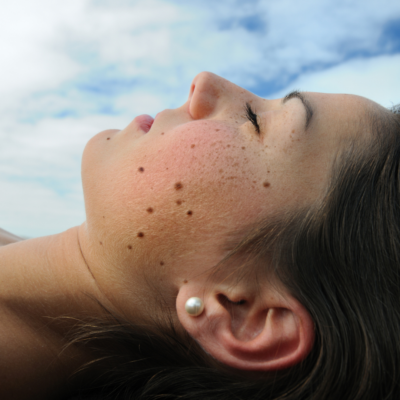Understand Acne And How To Treat It
Acne is a medical condition that can range from mild to severe and can take a toll on an individual’s self-esteem and social life. It affects as many as 85% of young adults aged 12-24, according to the American Academy of Dermatology. Because acne is such a big issue for so many Americans, we sat down to speak with Dr. Erik Cabral, a skin care expert at California Skin Institute who is a board certified dermatologist and a Fellow of the American Academy of Dermatology to discuss the best acne treatments. In this installment, Dr. Cabral shares pertinent information about acne treatments, why it occurs in certain individuals, and how he goes about treating acne in his patients.
Why do people get acne?
Dr. Cabral: There are various possible factors, but acne is typically age-related.
- Teenage acne is primarily caused by clogged pores, which is an inflammation of the pilosebaceous unit consisting of hair follicles, arrector pili muscles, and the sebaceous gland. This type of acne typically forms due to oil production and bacteria. Whiteheads and blackheads are a common problem for people struggling with teenage acne.
- Hormonal acne occurs primarily in adult women as a result of hormone flare-ups that occur around their menstrual period. This type of acne commonly presents in the form of nodules and cysts.
- Another form of adult acne is acne rosacea, which can be triggered by stress, sun exposure, certain foods, and drinks. Acne rosacea is indicated by redness and inflammation, as well as small bumps on the face.
How are teen acne and adult acne different?
Dr. Cabral: Teenage acne tends to be caused by the sebaceous glands and excess oil production while adult acne is more frequently trigger related. While teens tend to experience blackheads or whiteheads, adults may see more nodulocystic acne (nodules and cysts that are larger than typical whiteheads). Some adults are affected by specific triggers like certain foods and drinks.
What steps do you take for determining the best route for acne treatment?
Dr. Cabral: Each individual is different and reacts differently to treatment. In order to determine the best treatment options, we start by doing an examination of the patient’s face, chest and back. A physical examination is essential to determine the best route of treatment.
In addition to the examination, we consider all of the current medications the patient is taking, other medications they have received previously, such as antibiotics, and any other existing medical conditions they may have. Using all of that information we can then provide a customized treatment individually tailored to the patient’s needs.
What are some of the acne treatments offered by California Skin Institute for mild, moderate and severe cases?
Dr. Cabral: Every patient will have a unique treatment plan, but a sample treatment may include the following:
Mild acne – California Skin Institute Acne Solutions Kit which includes a four step treatment program with acne fighting ingredients including a salicylic acid and glycolic acid cleanser and toning pads, a benzoyl peroxide 10% defense gel and retinol 3X smoothing serum to reduce the appearance of enlarged pores and scars.
Moderate – For moderate acne, we may recommend the California Skin Institute Acne Solutions Kit and typically add in an oral antibiotic.
Severe – Severe acne will typically involve using a stronger medication such as isotretinoin for patients who do not respond to an oral antibiotic or topicals.
Laser and light therapy such as blue light therapy can help for all types of acne and also help with scars left by acne.
Are there any preventative steps people can take to avoid breakouts?
Dr. Cabral: We advise patients to stick to a regular routine when it comes to washing and using products with acne fighting ingredients, such as a benzoyl peroxide wash. Journaling or keeping a diary to track triggers that lead to breakouts and acne is also strongly recommended, as it can help patients and their doctors to identify causes and help avoid triggers.
Additional acne treatments offered at California Skin Institute include:
- N-Lite Pulsed Dye Laser
- Blu-U Blue Light Therapy
- Aura Laser
- Clear & Brilliant
- Acne Extraction
- Facials
- Aesthetician Services
- Microdermabrasion
- VersaPulse
- DermaSweep™ Microdermabrasion
- Glycolic Acid Peel
If you struggle with acne, schedule a consultation today to learn about your treatment options. Throughout the month of August, patients receive 15% off all California Skin Institute acne products, acne facials and peels.
In addition to a board certification in dermatology at Stanford, Dr. Erik Cabral is fellowship trained in Mohs micrographic and reconstructive surgery as well as dermatologic oncology. He is also a Fellow of the American Academy of Dermatology and an Associate Member of the American College of Mohs Surgery. He has over 40 scientific presentations, publications, and book chapters on reconstructive surgery, skin cancer, and cosmetic dermatology. In his spare time, Dr. Cabral is a fan of running, snowboarding, golf and wine.
Individual results may vary and are not guaranteed.



 / 291 Reviews
/ 291 Reviews